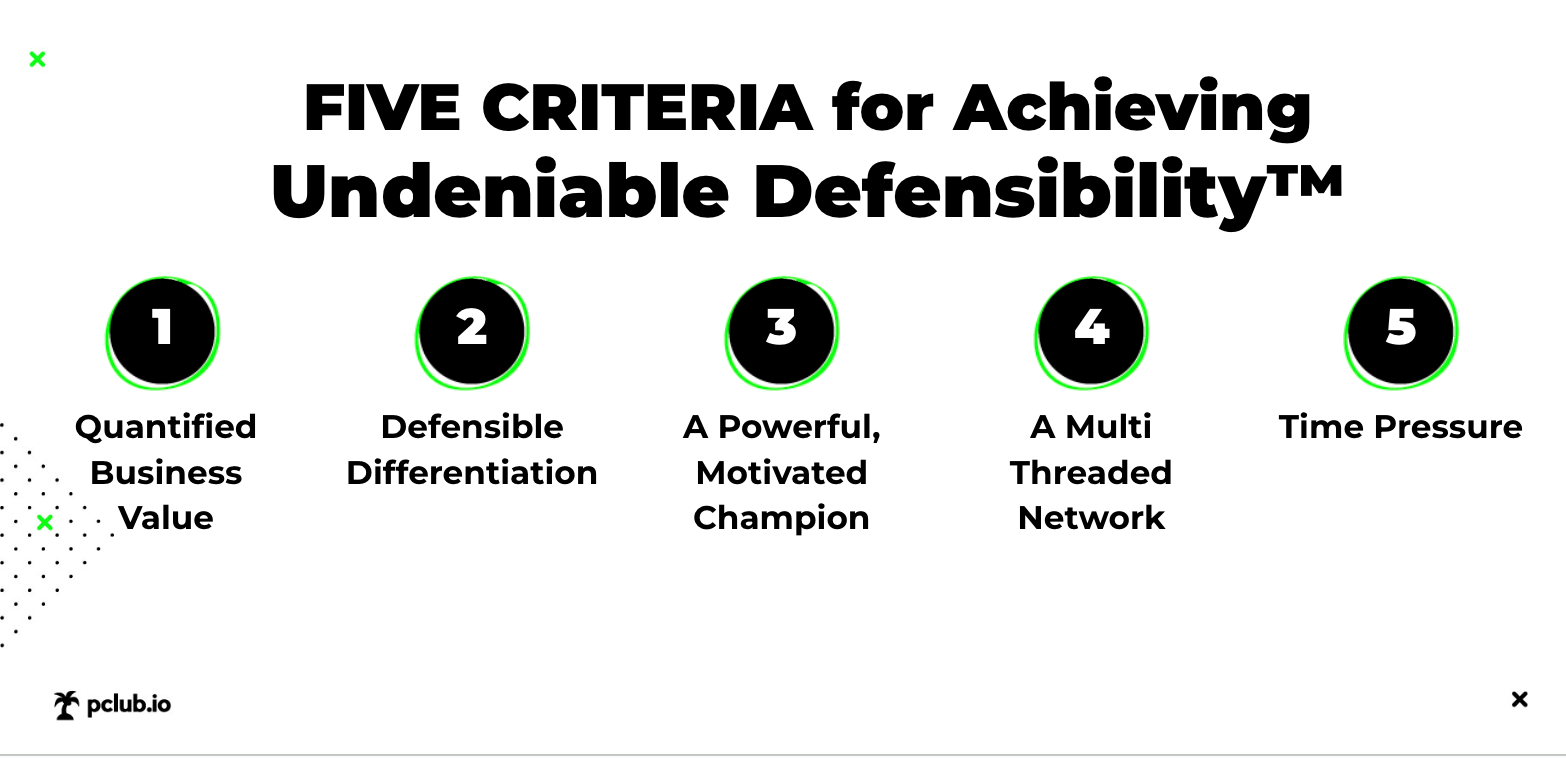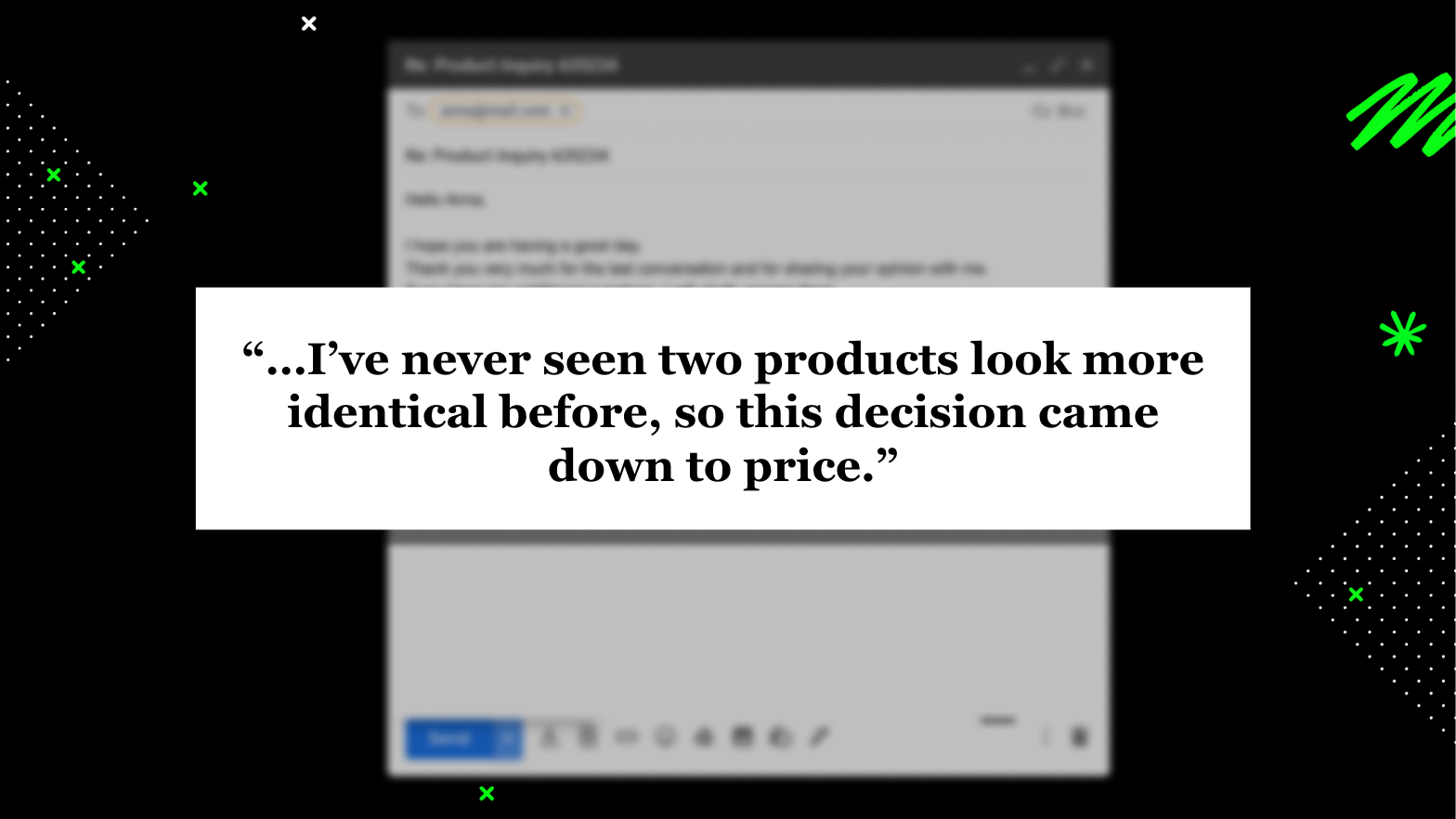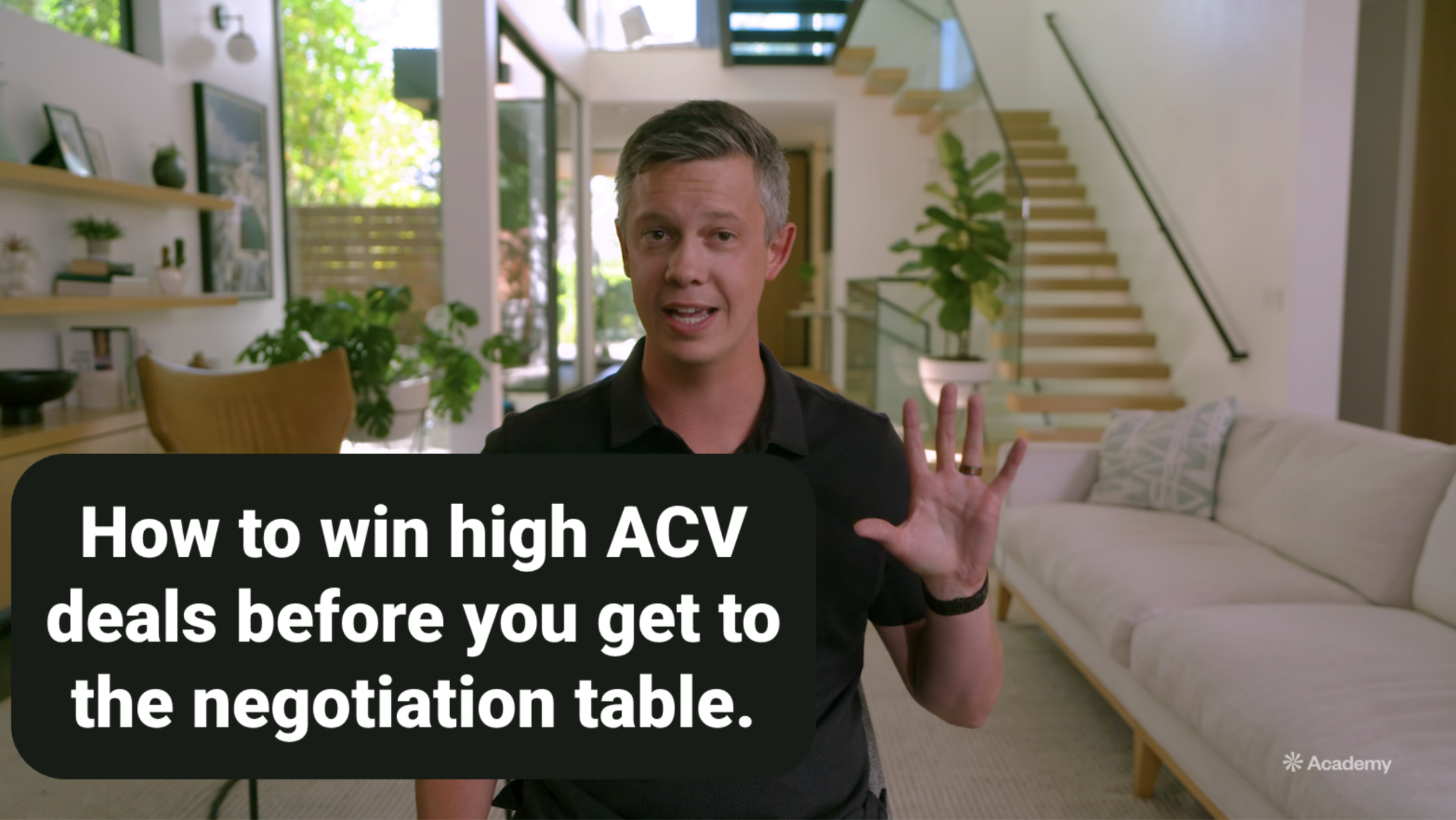“If you can’t discount down to $200,000, the deal’s off.”
It’s as if he felt a secret, sadistic joy spitting those words at me.
I was negotiating with a procurement leader in the last week of June, 2020 (end of quarter, coming right out of that short economy-stopping era of the pandemic where budgets froze while every company was in “wait and see” mode).
And we had quoted what we believed was a fair $300,000.
You can do that math. They wanted a whopping $100,000 discount. Even after our “best and final.”
And ultimately, I caved.
I had stupidly forecasted that deal and needed it to get to my number.
Years went by, quarter-ends came and passed, and I continued to systematize my framework for B2B & SaaS deal negotiations.
What I discovered is that while negotiation is one of the most valuable skills in existence, you can almost make it a lot easier if you have five deal fundamentals in place before you ever get to the negotiation table.
I call the outcome that these five fundamentals produce Undeniable Defensibility™.
The best negotiators don’t just win at the negotiating table— they “win the war before it begins.”
Here’s how they do it.

1. Quantifiable Value
If you don’t have a credible business case for the problem you’re solving (and the outcome you're delivering), it’s almost as if you have no right whatsoever to even be at the negotiation table.
If you haven’t quantified the problem and the value of solving it, you will be “negotiating out of context.” Buyers of all types, let alone procurement professionals, will view you as expensive and give you a hard time on price (if you ever get that far at all).
While quantifiable value is critical, really it’s nothing more than a ticket to even play the game, and yet I’d estimate that 90% of sellers stop here.
2. Defensible Differentiation
Many salespeople do an excellent job of quantifying value. Yet at the negotiation table, it doesn’t do them any good.
Why? They’ve failed to differentiate.
If you’ve quantified the value of the problem, but your competitor has a credible claim at solving that problem just as well as you (but cheaper), you have no leverage. Quantified value got you to the table, but it didn’t help you win the game.
And remember that being different for its own sake is worthless.
Your buyer has to find value in your differentiation for it to matter.
The uniqueness you claim must credibly solve the problem differently or better than your competitors in a way that creates additional value beyond what they can provide.
3. A Motivated Champion
It’s my experience that most procurement professionals don’t really care if a deal gets done or not. They’re only motivated when someone else within the business is motivated and therefore, motivating them.
This is what a champion gets you – positive pressure.
I’ve closed many, many deals despite a touch procurement negotiator simply by texting my champion, letting them know what’s going on, and that our mutual timeline is at risk if we don’t find a way through this.
If you’ve got a motivated champion, they will often exercise their political capital to push their less motivated colleagues to agree to the deal and close it.
4. A Multi-Threaded Network
A motivated champion is still not enough if you want to be bulletproof at the negotiation table.
Why?
Because people are unpredictable. Even good champions can go dark sometimes. Or worse, get fired or otherwise leave.
What happens then? Your negotiation leverage unravels (assuming the entire deal hasn’t). Procurement doesn’t have as much pressure to agree to your price. There isn’t anyone pushing anymore.
So what’s your insurance policy against that scenario?
Multi-threading.
If your champion “gets hit by a bus,” but you have three other contacts – some powerful, some not – who want to see the deal get done? Now you have a lifeline. Now you can regain leverage that would otherwise be lost.
5. Timeline Pressure
All else being equal, he who can’t afford to wait, loses. This is why savvy buyers know salespeople have “quarter end” numbers they need to meet, and use that pressure against them.
But what if you could find that pressure on the customer’s side? What if they have more time pressure to close the deal than you?
If they have a compelling event or an otherwise urgent, high cost of inaction? You’re almost certainly going to be able to command a higher price than if they didn’t.
Now…
Let’s zoom out for a second.
Look at the full picture of everything we just covered.
If procurement is playing a game of chicken with you, here’s what you need to get them to blink first:
Undeniable Defensibility™ Checklist
✅ Quantified value
✅ Valued differentiation
✅ Motivated champion
✅ Multi-threaded network
✅ Customer-side urgency
That is undeniable defensibility.
And as I’ve written about before, your income-per-hour will never be higher than when you’re negotiating.
If, over the course of a 1-hour call, you succeed in negotiating an otherwise $80,000 deal into $100,000, and you get paid 10% commission?
That’s $2,000 per hour, friends.
If you can raise your deal size by 25% without losing win rate, you’re not just negotiating — you’re compounding your income trajectory for the rest of your career.
For the ambitious, here’s what to do next:
I recently heard from an AE who got this dreaded email from his customer:

And they decided to move forward with a cheaper competitor.
If you’ve ever felt that sting, and If you’re coming up on quarter-end, I’d like to help you avoid that fate.
If you’d like to increase your ACV, negotiating power, and income, I’d like to invite you to take the pclub.io Advanced Negotiation Masterclass, which I personally authored.
Once you sign up for a pclub.io membership in the above link, you’ll have access to all courses, certifications, and career progression paths, and you can immediately enroll into this course.
Just a fair warning:
It is *not* a course for beginners.
This is for those who have already been in the (cover your ears) “blood splattered” ring of tough negotiations, and want to win those rooms with confidence and pricing power.
It’s a four-part course where you’ll exit with the following outcomes:
- How to “bullet proof” your deal with Undeniable Defensibility™
- How to position your pricing model to psychologically reduce resistance.
- A proven system to win high ACV negotiations, structured step by step
- 21 ACV-boosting negotiation strategies that put money in your bank.
- 9 strategies that protect ACV against the weapons savvy buyers use against you
If you’ve ever felt the sting of a deal slipping through your fingers at the eleventh hour, these aren’t just negotiation principles—they’re income insurance.
It’s Q4, so now’s the time to make your money.

Dedicated to upleveling the revenue workforce,
Chris Orlob,
CEO, pclub.io
P.S. You’re not years away from what you want. You’re skills away. Every skill unlock compounds into success, wealth, and confidence.


.avif)

.svg)






.svg)
.webp)

